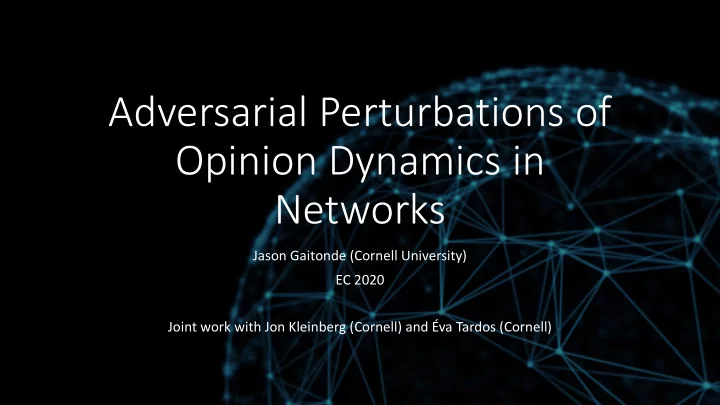

Adversarial Perturbations of Opinion Dynamics in Networks Jason Gaitonde (Cornell University) EC 2020 Joint work with Jon Kleinberg (Cornell) and Éva Tardos (Cornell)
Problem Setup • People’s opinions evolve via their interactions with others • We study the ability of an adversary to induce discord in a network with the Friedkin-Johnsen model of opinion dynamics Main Question: what is the relationship between graph structure, opinion dynamics, and an adversary’s ability to sow discord?
Main Results • For some forms of discord, entire spectral structure of network can control adversary’s power; for others, only extreme parts of spectrum matter • Network Defense: optimal node weights to minimize adversary’s power solvable via convex programming • Generalize to setting where opinion dynamics and disagreement graphs are decoupled and quantify how adversary’s power changes
Proof Techniques & Details • Write formulations of discord as quadratic forms in graph Laplacian • Courant-Fischer min-max theorem implies adversary’s power/strategy controlled by largest eigenvalue/corresponding eigenvector of quadratic form • As balance between innate opinions and network interactions changes in FJ model, adversary maximizing disagreement moves through all eigenvectors à interpolate between sparse and large cuts • For other formulations, no matter balance, uses fixed eigenvectors • With two graphs, adversary power typically increases; dictated by spectral similarity between Laplacians
Recommend
More recommend